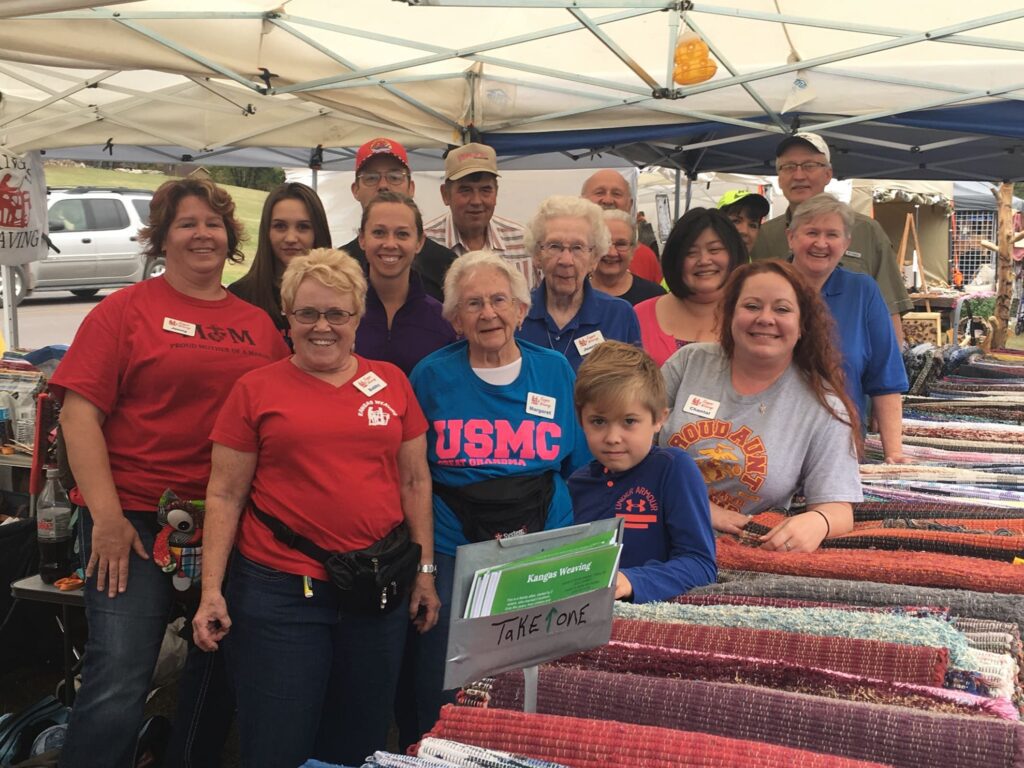This artistic and creative family, the Kangas, continues a longstanding tradition at Buffalo Roundup Arts Festival.
Words by Kayla Gahagan
Kangas Weaving is a tie that has bound multiple generations of a family together, and the fruit of that labor is witnessed in the reunion each year at the annual Custer State Park Buffalo Roundup Arts Festival.
Kangas Weaving will join close to 150 fellow vendors this year on the grassy lawn across from the park’s Peter Norbeck Outdoor Education Center.
Kangas Weaving has been a staple at the arts festival, participating in the event for more than 20 years.
“The Buffalo Roundup is fun because the bison are associated with times past and our weavings are also something from the past,” said Sandra Kangas. “We enjoy the physical setting, usually the weather, the celebratory atmosphere and the music. People we have known from years ago stop by – ‘do you remember me?’”
The Kangas family weaving business actually started with a simple love of weaving. Two sisters from Lake Norden – Juanita and Margaret, married brothers, Leverne and Monroe, in 1948.
Soon after marrying, the sisters purchased a loom in the early 1970s from two ladies in South Dakota and learned how to weave, falling in love with the process and the art. They eventually purchased another loom, and as their families grew, the craft was passed down and eventually became a way to earn income.
Four of the children, a handful of spouses and cousins, either have or currently weave, as have some of the grandchildren and now some of the great grandchildren. Weavers from the family live across South Dakota, North Dakota, Colorado and Arizona.
Family members sell goods at various events and arts festivals throughout the region, and the Buffalo Roundup Arts Festival is an end-of-summer cap that draws the family together.
Juanita and Sandra attended for the first time as a vendor booth in 2001.
“Sales were good, crowd was fun, and more family members became interested so we have returned annually,” Sandra said. “The support of the employees of the park and concessions company is also critical to make this happen and make us want to return.”
Kangas Weaving is a great example of what happens when one generation looks to the next generation.
“Many families do pass things on from generation to generation but I also think we have lost a lot of skills and gifts in the past,” Sandra said. “Many people pass along all the food traditions but those can all be eaten. With our weaving and our looms being passed down, we can’t keep everything we weave, so we need to treat it a little more like a business and sell off our hobby. Sharing the weaving keeps the family closer as we share the experiences and try to do some problem solving.”
Sandra said their craft is also a call back to the days before recycling was trendy.
“Most of what we use is recycled or upcycled materials,” she said. “Many young people think that recycling is a new concept. Not so. Recycling was a way of life as there weren’t enough products around. Everything was used and reused and repurposed until it was nothing. Weaving these rag rugs was just that – the clothing that finally was a rag would be put into a rug for further use. Nothing went to waste.”
Sandra said there is something fascinating and beautiful about the actual process of weaving.
“It’s the colors, the textures, the planning, and the mechanics,” she said. “It’s the sound of the shuttle and packing the rug with the beater, preparing the material (rags), wrapping the material into balls, and in some cases, identifying materials that were their clothes or materials from their home,” she explained.
She hopes it inspires other families to be purposeful with their gifts, and passing them down.
“For us, sharing these skills and products keeps us in touch, which is important for all families,” she said. “It doesn’t matter whether it’s crafting, cooking, or other skills; the common bond draws us together.”

